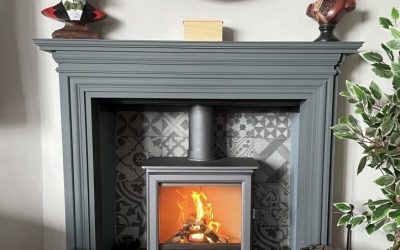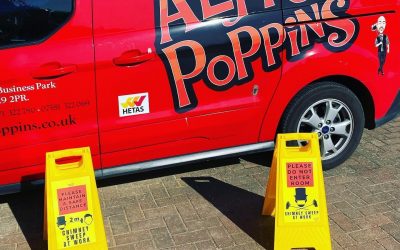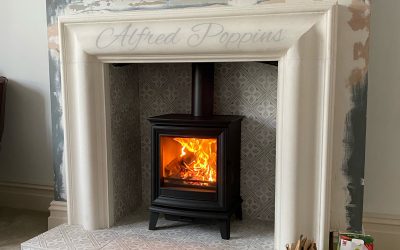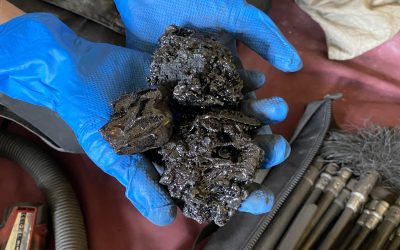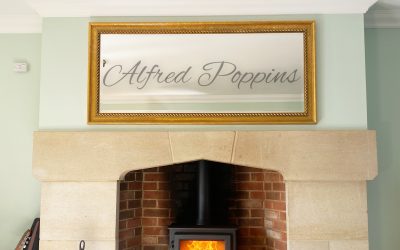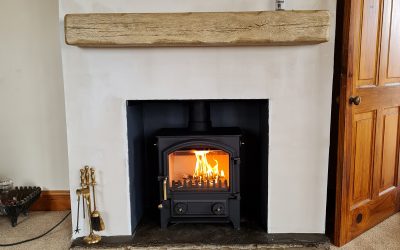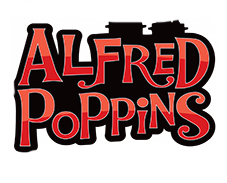
Stove & Wood Burner FAQ
What are the benefits of a solid fuel stove over a traditional open fireplace?
Most solid fuel stoves are approximately 40-50% more efficient than an open fire and allow the user to have control over the rate of burn and heat output to the room. Often a large percentage of the heat generated by central heating is lost from a room where an open fire is present (even when not in use). The installation of a stove will mean that the room is much warmer as the air flow is greatly reduced due to the installation of a register plate and the ability to close the air controls fitted on the appliance.
Why do I need a chimney liner?
When a chimney was designed originally for an open fire it was typical for a fire to burn 12kW of fuel per hour and give nominally 2kW into the room. When a stove is fitted, for every 2kW it gives into the room there is less than 1kW of heat going up the chimney. Thus there is insufficient heating of the clay or stone masonry if a stove is fitted without a lining. In this situation it is typical to have tar condensation and an incorrect draught for the stove to work correctly and efficiently. A chimney lining will also prevent smoke and fumes from your fire from leaking into other rooms of the house.
What heat output do I need for my room?
Height x width x depth (in metres) divided x 14.
This is only an approximate figure and does not take into account the numerous other factors such as; the number of exterior walls, the construction of the building, how well insulated the property is, number of windows within the room or even whether there is a staircase off of the room.
If I don’t have a traditional opening or chimney stack, can I still have a solid fuel fire?
Yes. A solid fuel stove can be fitted, providing that either a pre-fabricated (steel insulated flue) is installed, or a new precast sectional flue is built on the outside or through the building. It is normally best to have a woodburning stove, as a flue or chimney for an open fire will have greater cost and the installation is less efficient.
I only have a 16” opening in my fireplace. Can I still have a woodburning stove?
If you have an opening that is constructed to the British Standard of 16” wide x 22” high opening, then you can have a small stove which has been designed to suit this size of opening, such as the Stockton 3. Alternatively, many people either enlarge the opening to allow for a larger appliance, or opt for an inset woodburning appliance.
What is the difference between a woodburning and multifuel stove?
Wood burning stoves have flat fuel beds because wood burns better on a flat bed of ash, with air for combustion coming from above. Multi fuel stoves are fitted with grates because coal and smokeless fuels need to burn on top of a grate, with air entering from beneath the fire and the remainder of the fuel falling through the bars. Multifuel stoves can burn wood too as they are also designed to allow you to build up a bed of ash upon which to burn logs should you wish.
What is the difference between steel and cast iron stoves?
A cast iron stove is slower to warm up but will radiate heat much more evenly, often providing better control. They hold their heat for a long time after the fire has been extinguished. Originally stoves made of steel were less expensive and less sophisticated than those of cast iron. Today this is not really correct and many manufacturers are using a combination of materials to produce a high quality appliance which is both stylish and durable so the difference is really one of appearance; steel stoves tend to be of a more plain design and cast iron stoves tend to be heavier with more patterns in the design.
What is an airwash system?
Airwash is the movement of air across the doors to create a barrier between the burning fire and the glass. In some stove models this air is drawn through the stove to pre-heat it to a higher temperature to give a cleaner glass when the fire is used at a medium or lower temperature.
What is a clean burn system?
Clean burn is a new term and really is a concept to describe the fact that some new designs of stoves are able to burn all the fuel with very low emissions. Also referred to as “secondary burn”, the most common type is where warm air is fired into the stoves firebox just above the normal height of the fire. This allows unburned products of combustion in the smoke to combust. This creates a cleaner burn as less soot is going up the chimney and into the atmosphere, meaning that the stove is more efficient as you get more heat from your fuel.
What does DEFRA Approved mean?
This approval allows you to use the stove with dry wood only, or approved smokeless coal, in a smoke controlled area. These restrictions are usually placed in heavily populated urban areas, normally larger towns or cities.
Do I have to have a DEFRA Approved stove?
If you live in a smoke controlled area and wish to burn wood then yes you do, otherwise you will be breaking the law.
What is DIN plus?
DIN is the German Standards Authority which is responsible for developing new higher European standards for wood stoves. This is the highest standard in Europe and requires the best efficiency.
Who are HETAS?
HETAS originated as the “Heating Equipment Testing & Approval Scheme“. They are the governing body of solid fuel domestic heating appliances, fuels and services and are responsible for the registration of competent installers and businesses. For more information please visit www.hetas.co.uk.
Why do I need a HETAS certificate?
To comply with building regulations and demonstrate that your installation has been carried out by a fully trained, competent installer.
Who will know?
A copy of the certificate is sent to HETAS, who will notify your Local Authority Building Control Department (LABC) of the work carried out. This saves you the time and money (sometimes up to £300) of seeking a Building Notice yourself and having an inspector from your LABC sign off the installation.
A copy of the certificate is also required to be sent to you and the installer will also retain a copy.
If you sell your home then the Solicitor acting for the buyer will require a copy. It may also required to be presented to your insurance company. Should there be a problem and HETAS do not have a record of a HETAS certificate at the property then it is likely that you may not be insured.
Why do I need a carbon monoxide detector?
The new Building Regulations which were introduced in October 2010 require that a Carbon Monoxide detector be fitted in a room whenever a solid fuel appliance is installed. Alfred Poppins will install one for you on completion of fitting.
Do I need an air vent with my woodburning stove?
If the stove has a rated heat output of over 5kW, then yes it does. This should provide 5.5cm2 of free air for every kilowatt over 5. Sometimes a vent is required even if it is below 5kW because modern houses are being built to be air tight.
What maintenance does my woodburning stove require?
All woodburning stoves should be serviced and their flues swept at least once a year. The service would include the replacement of broken or damaged, rope seals, gaskets, firebricks, glass and fire cement seals. All moving parts should be checked in order that they are able to move freely when in operation. Alfred Poppins offers an annual service for all stoves that we install.
What fuel can I burn on my multifuel stove?
A multifuel stove can burn wood, coal, smokeless fuels and also peat. Before purchasing a fuel it is important to check the manufacturer’s instructions which will inform you which fuels are prohibited for use within your particular appliance.
How do I know if the wood I burn on my stove is dry?
If the wood is dry it will have cracks which reach to the core of the wood often big enough to fit a coin in. The bark will usually be able to be peeled like an orange, either easy or reluctantly. If the wood is dry then the flames will burn translucent with some blue flames and leave a large quantity of embers which will burn with tiny charcoal flames whilst the stove is hot. It is possible to buy wood moisture testers to measure how dry your wood is. Alfred Poppins provide a FREE moisture content tester with each install and we will show you how to use it.
Where can I get logs from?
There are likely to be many suppliers local to your area, but make sure that they supply you with properly seasoned wood if you want to use the wood soon after delivery. Alfred Poppins can recommend suppliers to you. Remember to check the moisture content before burning.
How often should I have my chimney swept?
At least once a year, but up to two or three times a year, particularly if you are using your stove regularly for long periods of time. This also applies if or you are using wood that is not dry, or operating the stove at too low a temperature for extended periods, which is more likely to cause a build up of creosote in the chimney.
Why is the glass on my stove going black?
If you have a modern clean burning stove with airwash then the appliance may be designed to burn with clear glass: confirm this with the supplier or manufacturer. If the stove is supposed to be clean burning but the glass gets heavy deposits of tar or soot when burning wood then the problem is usually due to wet wood. The moisture from the fuel is adhering to the glass surface. Test the wood to measure its moisture content; it should be less then 20%, as anything above this means you will not be able to achieve a hot, clean fire.
Can I burn my solid fuel stove with the doors open?
Depending upon the model of the stove chosen the answer is usually yes, but there will be a dramatic reduction in appliance efficiency, unless the appliance has a damper fitted. We would recommend checking the manufacturer’s instructions for details on individual appliances.
Why not check out the HETAS advice sheets we have available for download from our website. Click HERE
If you have any other questions you need answering about your appliance please feel free to contact us and we will do our best to answer them for you.

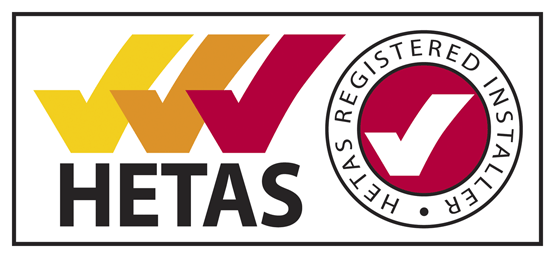
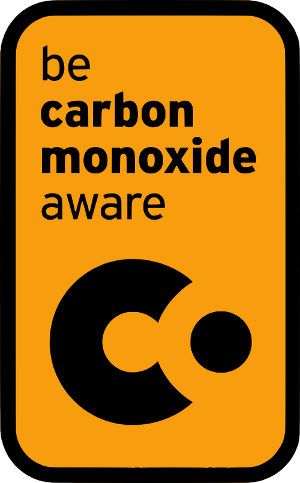
Latest News…
The New Clock Sudbury 5 stove available now!
At Alfred Poppins We have just taken stock of the new 5kW Clock Sudbury wood stove. It combines outstanding performance with elegant design. With an impressive heat output range of 3kW to 7kW, you can add a splash of colour with a choice of finishes. The new CLOCK...
2021 – a strange start to the year
2021 has started off a little weird for many people and it's no different here at Alfred Poppins Stoves. We made the decision to lock down for a month when the 3rd national lock down was announced. We did this to help lower the infection rate and try and do our part...
Before and after
We were tasked with removing this open fire in Bourne and the customer was adamant he wanted to replace it all. Although it was a traditional original fireplace, it was damaged in several areas so replacing it was a wise choice. We knocked it open and added a raised...
Creasote and tar removal
We have been attending a property in Tinwell to sort out a chimney that has not been swept in 15 years. Due to the unseasoned wood being burned it has built up a significant amount of tar and creasote. The client wants to have a new woodburning stove installed but...
Time for another Clock
We are getting more and more people buying the new Clock Blithfeild Mk2 stove. Since it’s launch 4 years ago the company have gone from strength to strength and now they have taken the award winning design even further. Clock Blithfeild Mk2 It is one of the easiest...
Town and country Little Thurlow
Today we have been working in Bisbrooke in Rutland. Lining a chimney and connecting a Town and country little Thurlow multi-fuel stove. Along with a stainless steel chimney liner, reclaimed Yorkstone hearth and faux oak beam we think the finish really suits this...

The Showroom:
Unit 4 West Street, Stamford, PE9 2PL
Stove showroom: 01780 753 979
Chimney sweeping: 07581 322069
Mobile: 07871 322 780 or 07581 322 069
Email. [email protected]
